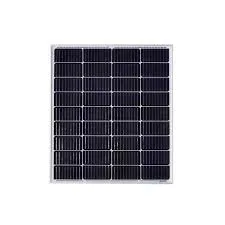solar panel price small size
The Price of Small Solar Panels What You Need to Know
As the demand for renewable energy continues to rise, solar panels have emerged as a popular choice for both residential and commercial applications. Among these options, small solar panels have gained particular attention for their versatility and efficiency. However, one of the most critical factors influencing the decision to invest in solar technology is the price. In this article, we will explore the pricing of small solar panels, the factors that affect their cost, and the benefits they provide.
Understanding Small Solar Panels
Small solar panels are defined as those with a lower wattage output, typically ranging from 50 watts to around 200 watts. They are ideal for applications where space is limited or for users who have lower power needs. Small solar panels can be used for various purposes, including charging batteries, powering garden lights, operating small appliances, or even as part of a larger solar power system. Their compact size makes them particularly attractive for urban dwellers, RV owners, campers, and anyone looking to harness clean energy without the commitment of larger systems.
Current Pricing Landscape
The price of small solar panels can vary significantly depending on several factors, including brand, efficiency, and technology type. As of mid-2023, small solar panels typically range in price from $100 to $500 per panel. Higher-quality models with better efficiency ratings may cost more but can offer better returns in energy production over time.
1. Brand Established brands with a reputation for quality often charge a premium for their products. While these panels might come at a higher initial cost, they typically offer warranties that can ensure performance over the years.
2. Efficiency The efficiency of a solar panel refers to how effectively it can convert sunlight into electricity. More efficient panels tend to be more expensive upfront; however, they can generate more power in a smaller footprint, potentially lowering costs in the long run.
3. Technology The technology used in manufacturing solar panels also plays a role in pricing. Monocrystalline panels, known for their high efficiency and sleek appearance, often come at a higher price compared to polycrystalline or thin-film options, which are generally less efficient and cheaper.
Factors Influencing Prices
Several external factors can influence the price of small solar panels, including
1. Market Demand Increased consumer interest in renewable energy can drive prices up due to heightened demand. On the other hand, if supply outpaces demand, prices may drop.
solar panel price small size

2. Supply Chain Issues Global events, such as the COVID-19 pandemic, have highlighted the importance of supply chains in pricing. Disruptions can lead to increased production costs, which are often passed on to consumers.
3. Government Incentives Many governments offer tax incentives and rebates for renewable energy installations, which can significantly offset the cost of purchasing solar panels. These incentives can vary by location and may influence how much individuals are willing to spend.
4. Installation Costs Beyond the price of the panels themselves, installation costs are a crucial consideration. Professional installation can add significant expenses, although DIY options are available for those with the necessary skills.
Benefits of Small Solar Panels
Investing in small solar panels can provide numerous benefits
1. Cost-Effective While the initial investment may seem high, the long-term savings on electricity bills can make small solar panels a financially smart choice.
2. Environmental Impact Using solar energy reduces reliance on fossil fuels, contributing to a decrease in carbon emissions and promoting a more sustainable energy future.
3. Energy Independence Small solar panels allow users to generate their own electricity, providing greater control over energy consumption and reduced vulnerability to energy price fluctuations.
4. Scalability Small solar panel systems can be easily expanded. If energy needs increase or more renewable energy is desired, additional panels can be added without the need for a complete system overhaul.
Conclusion
Small solar panels present a fantastic opportunity for individuals looking to embrace renewable energy and reduce their environmental footprint. While the pricing landscape can vary based on numerous factors, understanding these elements can help potential buyers make informed decisions. With a variety of options available, small solar panels offer a flexible and efficient solution for those seeking to harness the power of the sun. As technology continues to advance and prices stabilize, the future of small solar panels looks bright.
-
String Solar Inverter: The High-Efficiency Solution for Smart Solar EnergyNewsJul.14,2025
-
Revolutionizing Rooftop Energy with the Power of the Micro Solar InverterNewsJul.14,2025
-
Power Independence with Smart Off Grid Solar Inverter SolutionsNewsJul.14,2025
-
On Grid Solar Inverter: Powering the Future with Smart Grid IntegrationNewsJul.14,2025
-
Monocrystalline Solar Panels: High-Efficiency Power for the Future of Clean EnergyNewsJul.14,2025
-
Bifacial Solar Panel: A Smarter Investment for Next-Generation Energy SystemsNewsJul.14,2025







